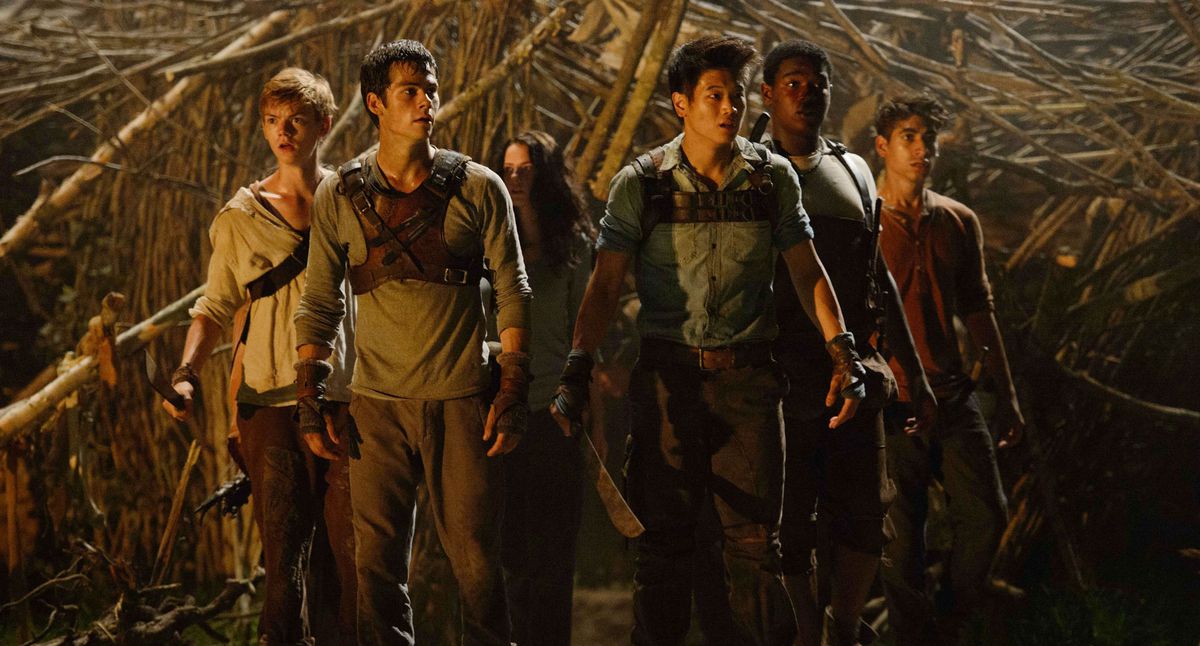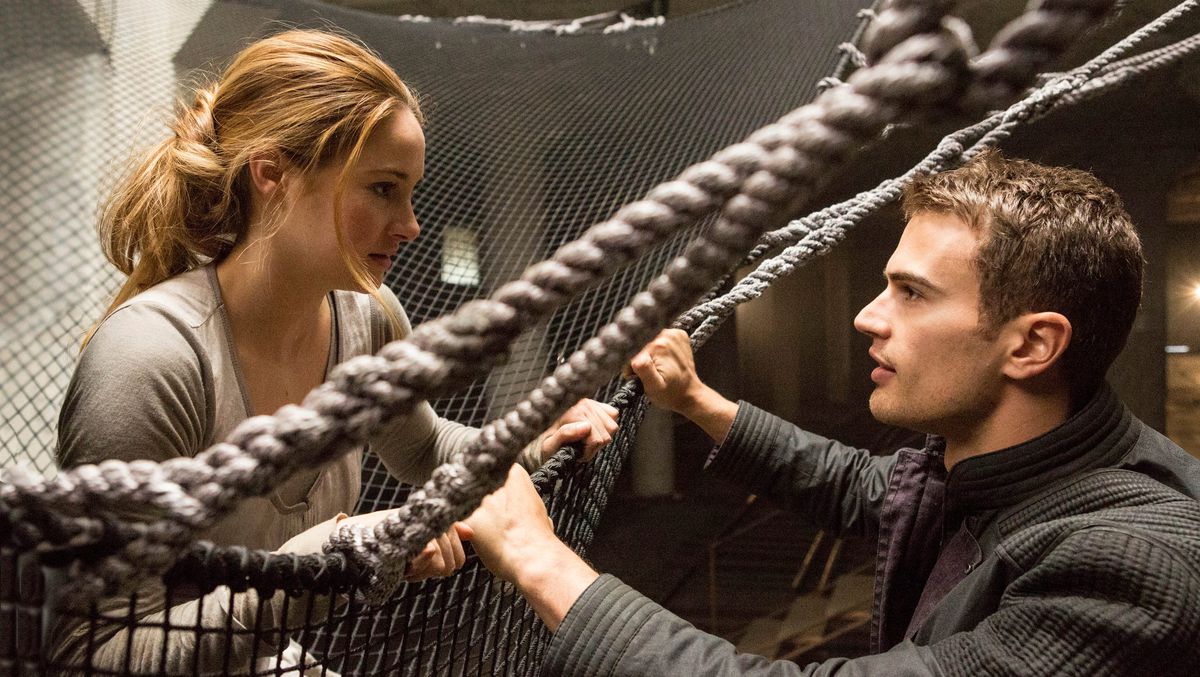The YA dystopia craze died because it didn’t evolve
Note: This essay on the Hunger Games phenomenon and the rise and fall of YA dystopias was originally published in 2021. It has been updated and republished due to the release of the prequel film in 2023 The Hunger Games: Songbirds and Snakes..
In the 2010s, the dystopian YA genre had a meteoric rise and an equally rapid fall The hunger Games and his followers dominate headlines and popular culture. It has been argued that the dystopia boom was inspired by cynicism and fear in the aftermath of the 9/11 attacksbut for those of us who became teenagers in the era of the YA dystopia obsession, the films in particular served another function: they cultivated a distrust of government, expressing and reinforcing how millennials around the world have embraced the tyrannical leaders were fed up.
The hunger Games especially helped popularize what had already become a thriving literary subgenre, with books from Lois Lowry’s 1993 novel The giver to Scott Westerfeld’s Uglies series that shapes the dystopian boom. And then the wave of Hunger Games copycats oversaturated the market and put an end to the craze – or so the popular story goes. Author Suzanne Collins calls back to it with her novel and now film The Hunger Games: Songbirds and Snakes, but she’s unlikely to revive the subgenre even if the film proves to be a hit. There are good reasons why the YA dystopia boom ended, and they were built into the property and its execution all along.
The intensity of the craze certainly contributed to its demise. In 2014 alone, four so-called blockbuster YA dystopian films hit theaters: The Hunger Games Mockingjay – Part 1, The Maze Runner, DivergentAnd The giver. But saturation isn’t enough to kill a genre, as the rolling wave of new superhero movies of the past decade proves. The YA dystopian genre died because it didn’t evolve. Book after book and movie after movie laid out the same tropes, featuring the same types of characters all suffering from the same generic oppression and experiencing the same teenage love triangles. The hunger Games struck a chord because of its lurid themes and the way it reinforced the concerns of the time about capitalism, imperialism, wealth and power inequality, and technology, but its followers largely added more gimmicks and various types of violence , and put an end to it.
Photo: Lionsgate
The hunger Games came from similar stories about adults versus youth, such as Battle Royale, but added new layers about media propaganda and the authoritarian structure. Suzanne Collins was inspired by Greek mythology, reality TV shows, and child soldiers, and she used those ideas to add texture to her books. Her main character, Katniss Everdeen, is relatable and down-to-earth: she doesn’t want to become a revolutionary or a hero, she just wants to keep her little sister Primrose safe. Her deteriorating mental health feels realistic, and was largely unprecedented in a genre full of daring teen heroes who made it through the most gruesome adventures completely unscathed.
After the Hunger Games series, subsequent YA dystopia films weren’t as richly realized, and the creators didn’t seem to care about the traumatic experiences their young protagonists went through. It’s unrealistic to have a movie about teenagers overthrowing tyrants, but little to no attention to their emotions. Katniss wasn’t endlessly stoic; Collins allows her to be vulnerable and teaches that feelings are a sign of strength rather than weakness. Many of the dystopia stories that followed avoided that kind of focus on feelings – or simply followed the Katniss pattern of fear and anxiety, without finding new territory to explore.
The Hunger Games series focuses on ending a brutal regime that executes children for sports, which requires a revolution and a complete restructuring of society. But the stories always stopped right after the last oppressive regime fell, as if that would solve all of society’s problems. While real teenagers struggled with their own idealism and a desire for a better world, fiction told them that systematic oppression is simple and easy to solve with a standard fight between good and evil, and that nothing that comes after that fight is interesting. or relevant. The stories of how these dystopian societies were rebuilt would be newer and more compelling, but there was never room for those kinds of thoughts or considerations in YA dystopias.
Which left these stories with nowhere to go after the injustices were righted and the fascist villains were defeated. They all built momentum and excitement around action, but few of these stories ever considered what young adult readers want to know: What comes next after a cruel leader is gone? Injustice rarely ends with the death or departure of one unjust ruler, but YA dystopian stories rarely consider the next world order, and how it might operate differently, without stigmatizing the people. Revolution, post-apocalyptic survival, and restructuring of society are fascinating topics, but aside from the Hunger Games’ brief coda about Katniss’ future PTSD, most YA dystopia stories simply don’t explore these areas.

Photo: Twentieth Century Fox
And just as YA dystopian stories weren’t particularly interested in the future, they were also rarely all that interested in their past, or even their present. They have almost never examined their societies in depth, other than declaring them evil, violent, and controlling. We don’t really know much about the destructive regimes in the Maze Runner or Divergent series – we just know that they’re bad. The series of dystopian films in particular offered only the quickest and most superficial explanation for why a government would force its children into mazes or have them killed. The Capitol’s desire to terrorize its citizens during the Hunger Games, or The maze runner‘s focus on population control and disaster relief – these are political excuses for mass murder, but not a nuanced one.
At the same time, YA dystopian stories have always been too reliant on the hero model, where a single teenager sparks an uprising and does most of the work in bringing down a totalitarian state. While that’s an empowering vision, it feels like a dated, hollow model for the young adults engaged in actual collective action. We are arguably living in dystopian times, amid a changing world where authoritarianism and fascism are on the rise. both in America And around the world. And the resistance against it must be cooperative, not dependent on the heroes of the Chosen One. Inequality and oppression are caused by institutions, not by individual villains who can easily be brought down. The simplicity of stories where one brave young person stops a monster and revolutionizes a society quickly started to feel like a simplistic fantasy.
Part of the way these dystopian fantasies avoided reality was by avoiding the real and relatable issues that teenagers face. Katniss, Divergent‘s Tris, and Maze Runner‘s Thomas are all teenagers, but their stories’ main concession to their ages are the little love triangles they face. Their stories explore issues surrounding technology, environmental destruction, and government control, but without, for example, explicitly drawing parallels between the innovative ways in which teens use technology or interact with the educational systems designed to shape it. Teens experience a plethora of emotions as we get older, but these dystopian films rarely felt authentic about teen fears or anxieties — their heroes just felt like generic adult heroes played by younger actors.
Of course, non-white people hardly exist in the dystopia film wave. The few BIPOC characters are never fully developed and the audience never learns about their stories. Studies emphasize that white characters are much better represented in YA literature than other groups, which may help explain how strange some fans were hindered by black characters in the Hunger Games films – in such a white-leaning genre, not only did they not expect anything else, they couldn’t handle it when it arrived.

Photo: Lionsgate
These dystopias suggest that they are set in some kind of post-racial utopia, but they get there by suggesting that non-white people would not exist in a dystopian society. Despite Jennifer Lawrence and Shailene Woodley dominates the genre with messages of female empowermentThey still live in fantasy worlds that reinforce some real-world problems, such as government overreach and deep inequality, but pay scant attention to the other real-world problems women and teenage girls face, such as gender discrimination and harassment. Pretending that none of these things would exist in dystopian society, when we know from real experience that oppressive regimes actually make the issue significantly worse, feels shallow and untrue.
But who knows, if the march against new fascist regimes continues, the genre may revive in a new form. Trends come and go, but they are usually cyclical – and the second or third time they are more likely to have evolved. As the diversity wave spreads through various cinematic and literary genres, from fantasy to romance to sci-fi and beyond, the YA dystopia genre could revive in new forms. With the rise of more BIPOC creatives in the industry, perhaps we’ll get a distinctive YA dystopian film with more characters of color.
Not everyone wants to live in or imagine a dystopian society. The dystopian craze may have faded in part because young readers and viewers are ready for some positivity and less fantastical, simplified problems and solutions. But it is also possible that they are now doing the work themselves. Young people are waging increasingly sophisticated political campaigns against the real dystopian future they face, from the climate crisis and the resurgence of authoritarian governments to country-specific issues such as sectarian violence, wars, white nationalism and terrorist attacks. Ultimately, it might be possible for authors to draw inspiration from that reality and revive the genre in more compelling and compelling forms.
